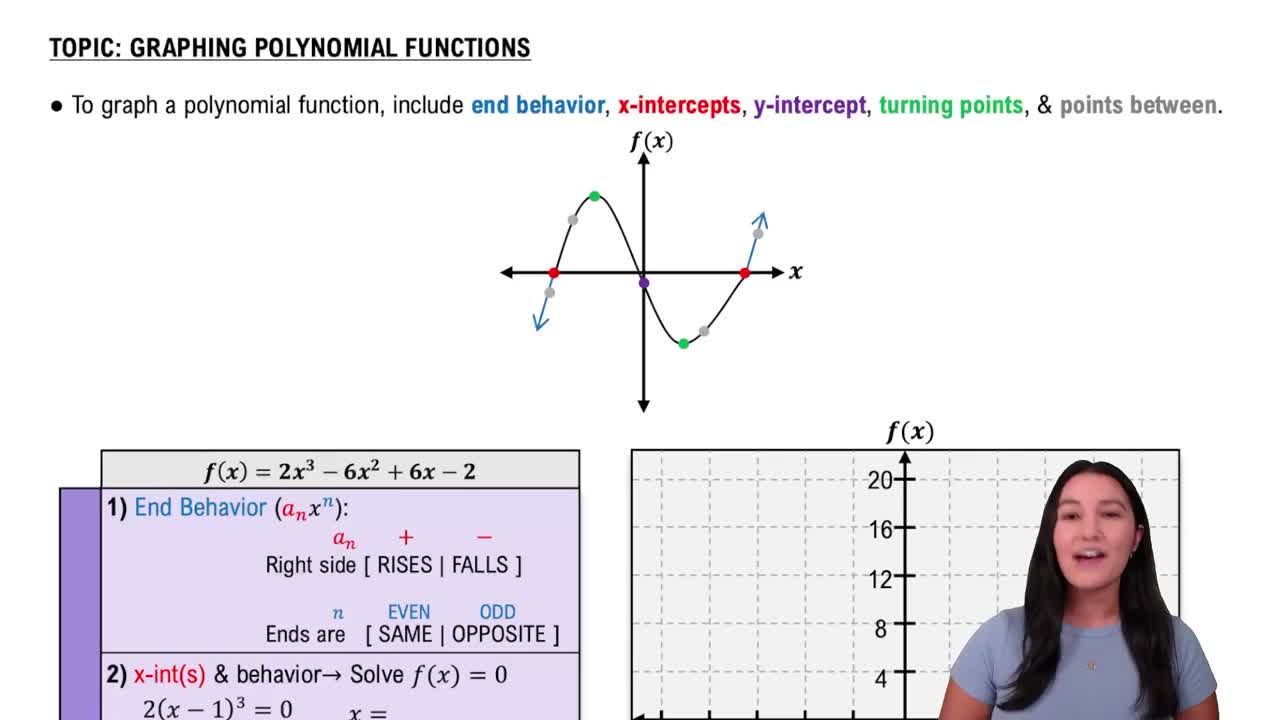Here are the essential concepts you must grasp in order to answer the question correctly.
Polynomial Functions
A polynomial function is a mathematical expression involving a sum of powers in one or more variables multiplied by coefficients. The general form of a polynomial in one variable is f(x) = a_nx^n + a_(n-1)x^(n-1) + ... + a_1x + a_0, where 'n' is a non-negative integer and 'a_n' are constants. Understanding the structure of polynomial functions is essential for graphing them accurately.
Recommended video:
Introduction to Polynomial Functions
Factoring Polynomials
Factoring polynomials involves expressing a polynomial as a product of its simpler polynomial factors. This process is crucial for simplifying expressions and finding the roots of the polynomial, which are the x-values where the function equals zero. Techniques for factoring include identifying common factors, using the difference of squares, and applying the quadratic formula when necessary.
Recommended video:
Introduction to Factoring Polynomials
Graphing Polynomial Functions
Graphing polynomial functions requires understanding their key features, such as intercepts, end behavior, and turning points. The roots of the polynomial, found through factoring, indicate where the graph crosses the x-axis. Additionally, the degree of the polynomial determines the number of turning points and the overall shape of the graph, which is essential for accurately representing the function visually.
Recommended video:
Graphing Polynomial Functions
 Verified step by step guidance
Verified step by step guidance Verified video answer for a similar problem:
Verified video answer for a similar problem:



 6:04m
6:04m